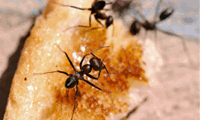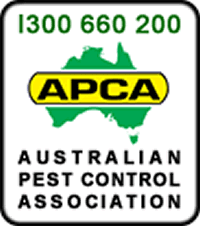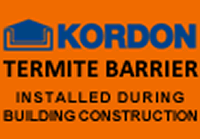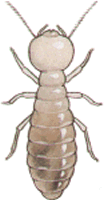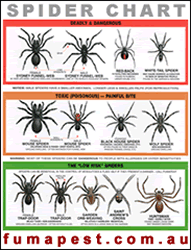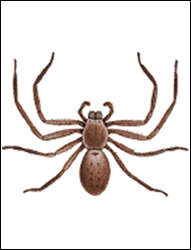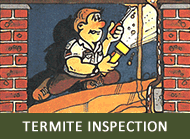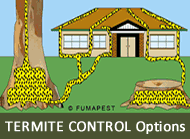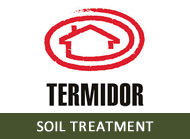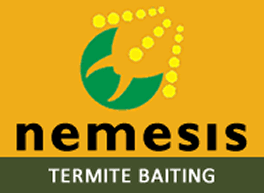| FUMAPEST Advice • Pest Control for Ants |
Every home is vulnerable: Ants may travel large distances in search of food. Even the cleanest of homes can provide a ready food source for ants which once found can invade in large numbers, such that professional help is required. A nuisance pest: A few ant species can inflict painful bites, most are a nuisance pest when they infest pantries, kitchens and BBQ areas in large numbers. Summer time is particularly problematic as the ants are out in force, building up their numbers and searching incessantly for food to be stored in their colony nest to enable their survival during the colder winter months. |
||||
| Correct identification is essential: Identification of the particular species of ant is vital to implementing a control program.
Ants are subterranean insects. Some species nest in the ground, others more likely find a home in your roof void or wall cavity.
They can be nesting more than three houses away and have massive underground colonies. This makes them hard to control and treat.
Locating the colony nest is sometimes impossible as they may nest in concealed locations. However, where a nest is found, particularly in the soil then a liquid insecticide can be used directly into the burrow into the nest. Ants take the bait: A range of baits are available to the professional pest controller, their use depending on whether the ants species are sugar feeders or protein eaters. Basic Ant Treatment: where ants are targeted directly. No warranty is given with this treatment. The cost may be approximately $290 depending on the size of area treated and extent of infestation. Termidor Ant Treatment: Very effective treatment where the product is sprayed around the exterior of the building and on the nest. The ants take the chemical back to their nest severely affecting the other ants in that colony. The whole colony is destroyed. There is normally a 1 month warranty with this service. The cost may be approximately $360 for an average size residential house.
|
||||
Ring the experts: successful pest control of ants depends on many variables learnt from technical training and practical experience in a wide variety of situations. Consumer note: you may find cheaper prices for ant control in your local area, usually from companies using the cheaper solvent based pesticides in and around the home, which we do NOT recommend, especially if residents suffer asthma or bronchial ailments. Be careful when selecting a pest controller - it's far too easy to get a State Govt issued pest control licence and start up a pest control business, using trainees with little knowledge or experience in ant pest control situations .... for more details. |
||
| White-footed house ants |
Biology: Colonies of white-footed house ants often contain many satellite nesting sites spread over a wide area. Strength in numbers: The entire brood may contain several million workers and numerous reproductive queens. White-footed house ants have a preference for sweet tasting food, such as sugar, soft drinks and the like. Nesting sites: their nests are commonly found outdoors, in the ground or above ground in trees, in buildings, such as, in wall cavities, roof voids, architraves and fireplaces. They are known to get into and short-circuit air conditioners. |
|||
| Odorous house ants |
Biology: Odorous house ant colonies can contain more than 10,000 workers and several reproductive females to establish subsidiary colonies. Ants from different colonies are not aggressive toward each other. Nesting sites: their nests are commonly found outdoors, in the soil under the base of trees and indoors. Nests in the soil are usually shallow, situated under a stone, pavers or other flat objects. Inside your home: The odorous house ant commonly nest under buildings and inside wall cavities, particularly if there is a regular moisture source available. Look for moisture problems from faulty plumbing, leaking shower recess, broken guttering and roof tiles. |
|||
| Coastal brown ants |
Coastal brown workers approximately 2 to 3 mm in length. Nesting sites: Coastal brown ants prefer to build their nests in wall cavities, garden beds and sub-floor areas. |
|||
| Carpenter ants |
Biology: Carpenter ants often enter buildings to nest and forage. They excavate their nests in wood (hence the name "carpenter" ants), creating smooth tunnels and galleries. The colonies of some species of Carpenter ants, may exceed 100,000 workers, with multiple queens and satellite nesting sites. Most species are smaller and require many years to reach maturity. They can travel long distances in search of food. Nesting sites: they most often build their nests outside, in moist wood, soil, wigs and branches, but some species will readily infest timbers in buildings. |
|||
| Bulldog ants |
Nesting sites: Bulldog ants prefer to nest in garden or forest areas and will bite if provoked. |
|||
| About FUMAPEST Termite & Pest Control wyong |
|
|||||||||||||||
| WARNING: The NSW Govt EPA Pest Control Licensing is INADEQUATE |
The NSW Pest Control Licensing system is subject to National Competency Assessment guidelines. Mediocre testing can be carried by Private Workplace Assessors (not part of TAFE system). The so called competency assessment can be a combination of oral, written and visual tests. Private Workplace Assessors are given general guidelines in the National Competency Standards but there is no set standard test or specific knowledge requirements. Once privately assessed as "competent" then the NSW Govt EPA Pest Control Licensing will issue a pest control licence to the individual. There is no published list of Private Workplace Assessors.. The System is Inadequate: Some Private Assessors offer a one week course. A person so issued with a pest control licence can set up a Pest Control business (not required to register with EPA Licensing Authority and employ many trainees, using pesticides in people's homes without direct personal supervision. FUMAPEST Setting the Standard in an industry plagued by fly-by-night operators, FUMAPEST Termite & Pest Control stands out as a well established pest control business with excellent reputation in the market-place. Same Family Business • Since 1964 • Termite & Pest Control Specialists. |
||||||||||||||||
| FUMAPEST Termite & Pest Control ... services we offer |
Commercial Food Premises • FUMAPEST wyong Pest Control is compliant with Food Act NSW & HACCP requirements for commercial food handling premises in wyong Council Region • restaurants • cafes • bakeries • backpacker hostels • child care centres • churches • factories • health care facilities • hospitals • hotels • motels • nursing homes • offices • racehorse stables • retirement villages • schools • colleges • veterinary clinics • other sensitive environments • click here for more details. Termite Control Specialists • AS.4349 Termite Inspection Reports • Termite Baiting • Termite Colony Elimination • Exterra termite bait • Nemesis termite bait • Sentricon termite bait • AS3660 Termite Preventive Barriers • Termiticides • Altriset • Termidor fipronil • Premise imidacloprid • click here for more details. KORDON Termite Barrier for Builders • Manufactured by Bayer Australia • FUMAPEST Termite & Pest Control are Licensed KORDON Installers for building constructions in the wyong Council Region • KORDON is CodeMark Accredited and meets Australian Building Code and wyong Council termite control requirements for buildings under construction • a 10 year warranty applies backed by Bayer • click here for more details. Professionally Trained Technicians • The FUMAPEST Termite & Pest Control Training Program regularly assesses and updates technician skills in the use of latest generation products and our EcoSafe Pest Control systems • all termite control technicians have the APCA or TAFE Pest Control Certificate • NSW Govt EPA Pest Control Licence • and many years field-work experience in termite control. |
||||||||||||||||||||||||
| FUMAPEST Termite & Pest Control services the wyong Council Region |
